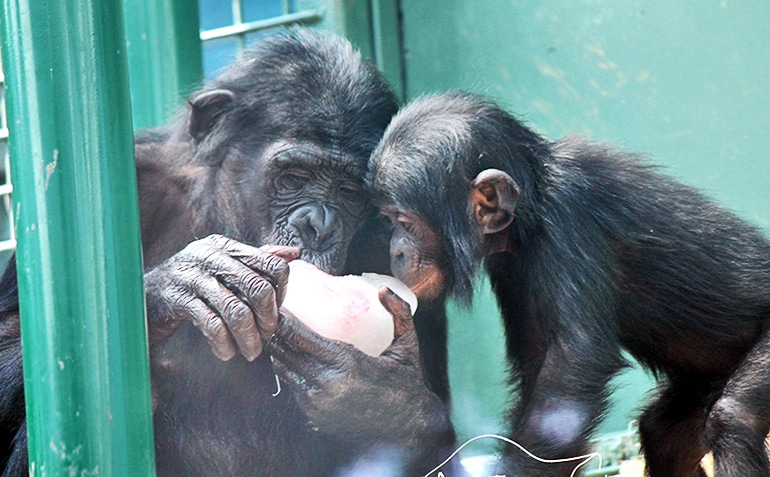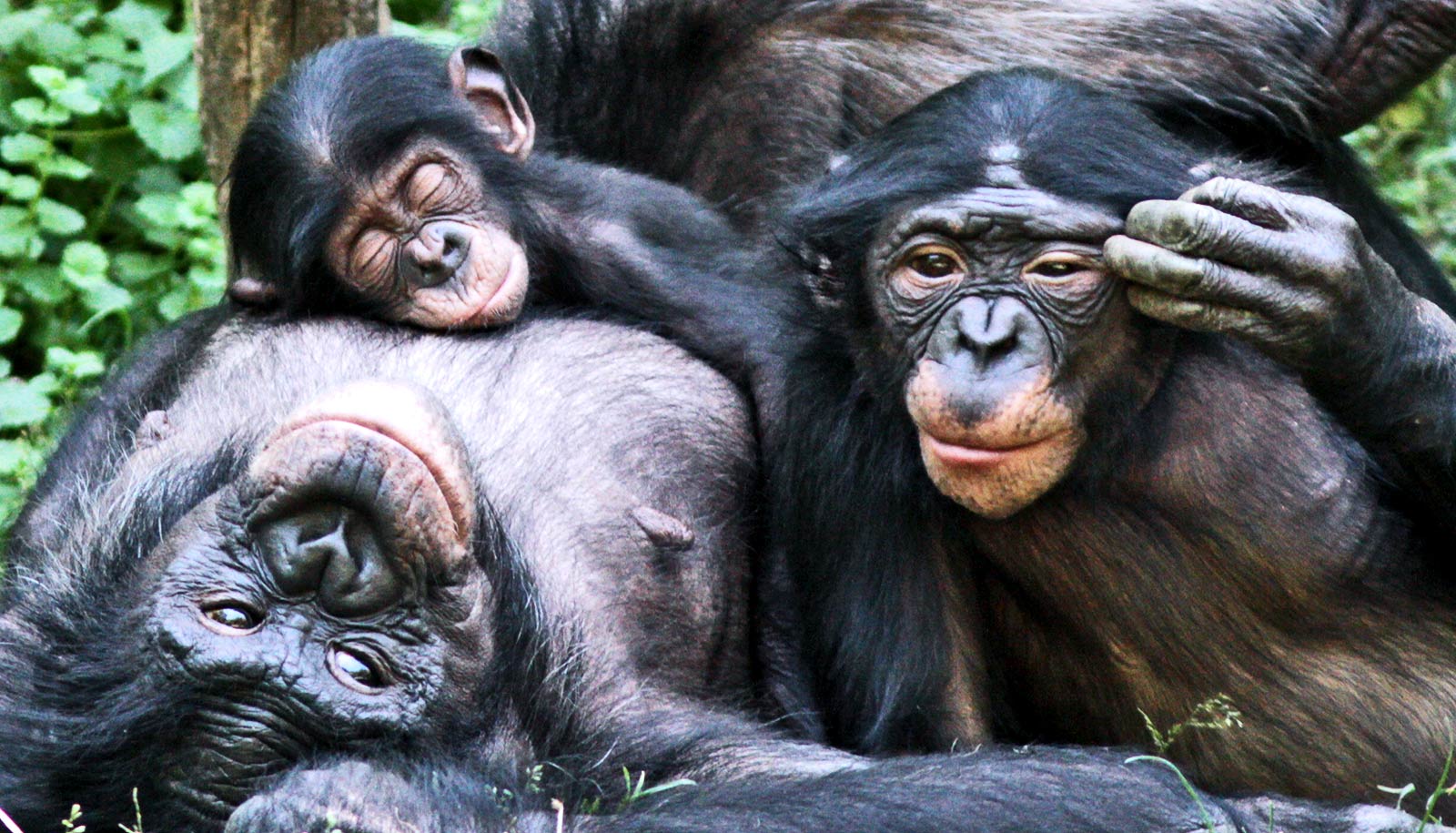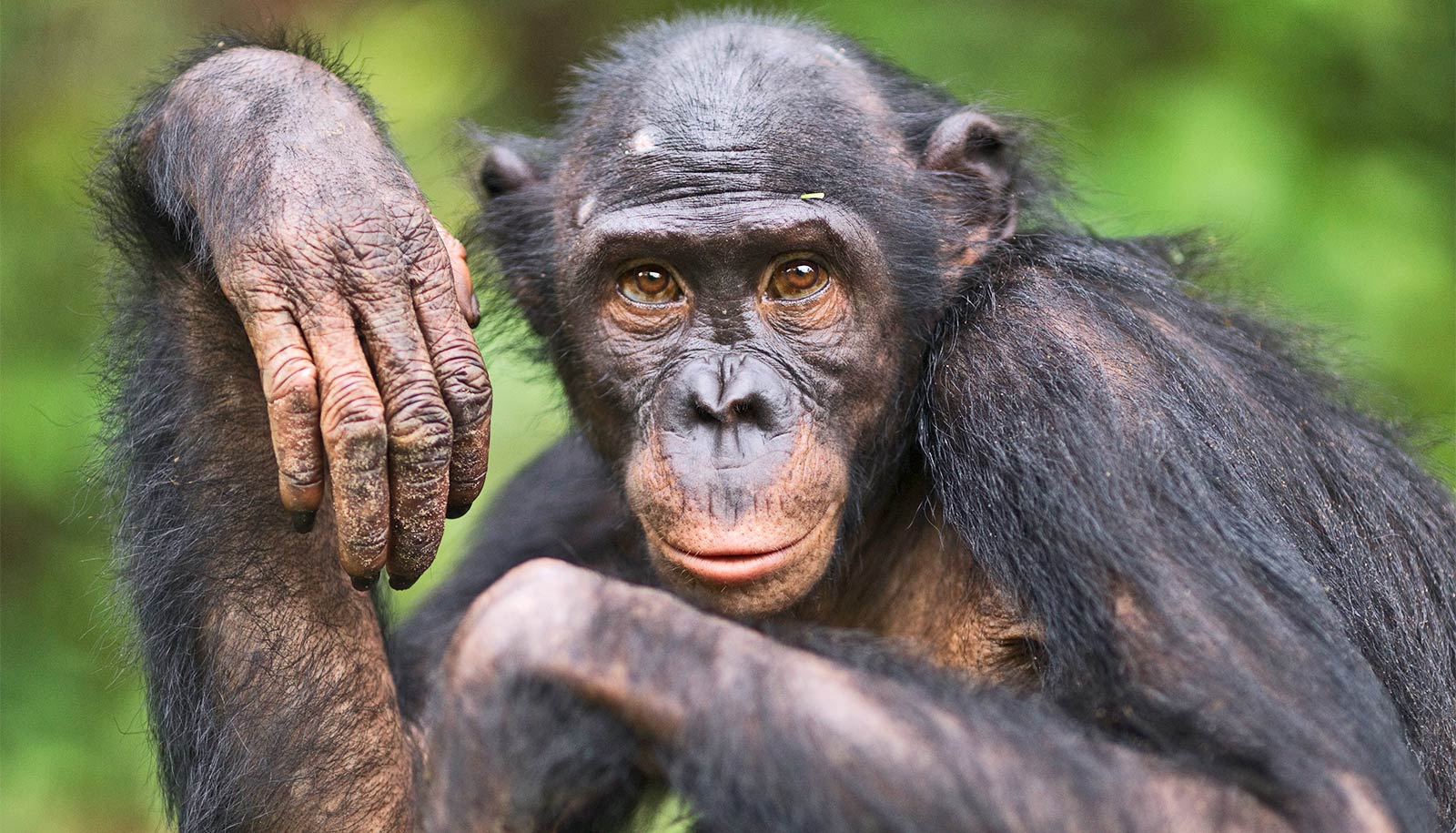Young female bonobos prepare for motherhood by taking care of babies, whether they’re related to them or not, a new study shows.
What’s more, that babysitting helps to form alliances, which can pay off in times of hostility.
“After studying bonobos for several years, I noticed that juveniles and adolescents were obsessed with the babies,” says Klaree Boose, an instructor in the department of anthropology at the University of Oregon. “They played with the babies and carried them around. It appeared to be more than just play behavior.”

The research, done with captive bonobos at the Columbus Zoo and Aquarium in Ohio, also explains behaviors that scientists have seen but only focused on in the wild, says coauthor Frances White, head of the anthropology department at UO. White has studied bonobos in their natural habit in Africa for years.
“It is common in the wild to see infant bonobos be a focus of enormous interest to others, especially to adolescent bonobos,” White says. “It is often noticeable how bonobo mothers are willing to let others get close and interact with their infants, as compared to chimpanzees who are more restrictive.”
The study allowed researchers to take that knowledge and explore individual relationships in a way that has not been done in the wild, she says.
“The Columbus Zoo has done a wonderful job of copying wild behavior in letting the bonobos divide on a day-by-day basis into different groupings, much as they do in the wild,” White says. “This zoo setting made this kind of study, which looks at normal wild behaviors, possible.”
In the wild, bonobos live in a small area of the Congo Basin in the Democratic Republic of the Congo. People often mistake them as chimpanzees but they’re a separate species. The females hold high-ranking positions and often form female-female coalitions that stand up to males.
The new findings, which drew from 1,819 hours of observations of 11 females and 8 males during summer months of 2011-2015, were surprising, Boose says.
“Like all ape species, bonobo females don’t need somebody to help them take care of their infants. They are perfectly capable of doing it themselves,” she explains.
“These were very deliberate caretaking behaviors.”
Initially, Boose observed that all juvenile bonobos, ages 3-7, were obsessed with handling the infants, all under age 3. As they entered adolescence, however, females continued to approach the mothers and help care for the infants, while males turned away in favor of other behaviors.
“Handling behavior picked up among the female adolescents, and it was really intense,” Boose says. “They would approach the mothers, groom them briefly, and then carry the babies away. They’d move across the enclosure, where they would engage in nurturing and other maternal behaviors with the infants, such as grooming and cradling them, putting them on their belly and carrying them on their back. These were very deliberate caretaking behaviors.”
Boose also found a hormonal link to her observations. Elevated levels of oxytocin—associated with complex social behaviors and social cognition, including maternal and caregiving activities—were common in urine samples collected after infant-handling activities.
Bonobos like bullies more than helpers
As young females interact with the infants, Boose says, increased oxytocin may reflect how the body reinforces caregiving activity or social bonding with mothers or infants.
That bonding also reaped dividends for young female bonobos. Mothers often came to the aid of younger females that had handled their infants when conflicts arose over access to food and other fighting situations.
Bonobos are nice to strangers, no strings attached
“When a fight involved a handler, particularly the adolescent females, the mother would help the individual that had handled her infant attack the aggressor, usually an adolescent or adult male but sometimes another female,” Boose says. “They would intervene and support them.”
Other researchers from the University of Oregon and from the Columbus Zoo and Aquarium are coauthors of the study, which appears in Physiology and Behavior.
Source: University of Oregon



